- Sensible Vegetable Fertilisation Guide
- 1. Choosing the Right Fertiliser
- 2. Preparing the Soil
- 3. Fertilising Cucumbers
- 4. Fertilising Tomatoes
- 5. Avoid Overfertilisation
- 6. Regular Soil Testing
- 7. Watering and Fertilisation
- 8. Mulching
- Cucumbers and Tomatoes
- 1. Timing
- 2. Organic Options
- 3. Application Method
- 4. Watering
- 5. Mulching
- Conclusion
- Importance of Soil Fertility
- Nutrient Availability
- Improved Plant Growth
- Increased Yield and Quality
- Sustainability
- Healthy Plants and High Yields
- 1. Soil Preparation
- 2. Balanced Fertilisation
- 3. Nitrogen, Phosphorus, and Potassium
- 4. Micronutrients
- 5. Timing of Fertilisation
- 6. Watering and Drainage
- 7. Monitoring and Adjusting
- Fertilising Cucumbers
- 1. Organic Matter
- 2. Nitrogen-Rich Fertilisers
- 3. Balanced NPK Ratio
- 4. Regular Feeding
- 5. Liquid Fertilisers
- 6. Mulching
- 7. Top Dressing
- 8. Monitoring and Adjusting
- Timing and Methods
- Timing
- Methods
- Fertilising Tomatoes
- When to fertilise tomatoes
- How to fertilise tomatoes
- Fertiliser recommendations for tomatoes
- When and How to Apply Fertiliser
- 1. Timing
- 2. Fertiliser Type
- 3. Application Method
- 4. Fertiliser Amount
- 5. Watering After Application
- Recommended Fertilisers
- 1. Organic Fertilisers
- 2. Synthetic Fertilisers
- Types and Nutrient Ratios
- “Question-Answer”
- When is the best time to fertilise cucumbers and tomatoes?
- How often should I fertilise my cucumber and tomato plants?
- What type of fertiliser should I use for cucumbers and tomatoes?
- Can I use homemade compost as a fertiliser for cucumbers and tomatoes?
- What are the signs that my cucumber and tomato plants need fertilisation?
- Can I use foliar feeding as a method of fertilising cucumbers and tomatoes?
- Can I use fertilisers with high nitrogen content for cucumbers and tomatoes?
- “Video” HOW TO GET RID OF MALE FLOWERS ON CUCUMBERS! AND GET BIG HARVEST
Growing cucumbers and tomatoes in your garden can be a rewarding experience, but it’s important to provide these plants with the right nutrients at the right time. Understanding when and how to fertilise your cucumbers and tomatoes can greatly enhance their growth and health, leading to a bountiful harvest.
When to Fertilise
Both cucumbers and tomatoes benefit from regular fertilisation throughout their growing season. It’s best to start fertilising these plants when they are actively growing, typically after the seedlings have established themselves and have a few true leaves. This is usually around four to six weeks after planting.
Tip: Before fertilising, it’s always a good idea to test the soil to determine its nutrient content. This will help you determine the appropriate type and amount of fertiliser to use.
How to Fertilise
There are a variety of fertilisers available for cucumbers and tomatoes, including organic and synthetic options. Whichever type you choose, make sure to follow the instructions on the packaging for proper application rates.
One popular method is to use a slow-release granular fertiliser. This type of fertiliser is applied directly to the soil, and its nutrients are released over an extended period of time. This can help provide a steady supply of nutrients to the plants throughout the growing season.
In addition to granular fertilisers, liquid fertilisers can also be applied to cucumbers and tomatoes. These are typically mixed with water and applied directly to the plant’s roots. Liquid fertilisers can provide a quick boost of nutrients, but may need to be reapplied more frequently.
Important: When applying fertiliser, always follow the manufacturer’s instructions and avoid over-fertilisation. Too much fertiliser can lead to excessive foliage growth and decreased fruit production.
By following these sensible fertilisation guidelines, you can ensure that your cucumbers and tomatoes receive the nutrients they need for optimal growth and productivity. With a little care and attention, you’ll be rewarded with a plentiful harvest of delicious home-grown vegetables.
Sensible Vegetable Fertilisation Guide
Proper fertilisation is essential for the healthy growth and development of vegetables like cucumbers and tomatoes. It helps provide the necessary nutrients that these plants require for optimal production. This guide will provide you with useful information on when and how to fertilise your cucumber and tomato plants.
1. Choosing the Right Fertiliser
Before applying any fertiliser, it’s essential to choose the right type for your vegetables. Look for a balanced fertiliser that contains a mix of essential nutrients like nitrogen, phosphorus, and potassium (NPK). Additionally, it should have micronutrients like calcium, magnesium, and iron. Consider using organic fertilisers for a more sustainable approach.
2. Preparing the Soil
Proper soil preparation is crucial for effective fertilisation. Before planting your vegetables, ensure that the soil is well-drained and has good organic matter content. Incorporate compost or well-rotted manure into the soil to improve its fertility. This will provide a solid foundation for the plants to absorb nutrients from the fertiliser.
3. Fertilising Cucumbers
Cucumbers are heavy feeders and require regular fertilisation throughout the growing season. Start by applying a balanced granular fertiliser at planting time. Follow the package instructions for the appropriate dosage based on the size of your cucumber patch. Additionally, apply a water-soluble fertiliser every two weeks during active growth to provide a steady supply of nutrients.
4. Fertilising Tomatoes
Tomatoes also benefit from regular fertilisation to promote healthy fruit production. Apply a slow-release fertiliser at planting time, ensuring it is evenly distributed around the base of the plants. You can also use a liquid fertiliser diluted with water to supply additional nutrients during the growing season. Apply it every two weeks or as recommended by the product label.
5. Avoid Overfertilisation
While fertilisation is crucial, it’s important to avoid overfertilising your vegetable plants. Excessive fertiliser can lead to nutrient burn, stunted growth, and environmental pollution. Always follow the recommended dosage provided on the fertiliser package or consult with a local gardening expert for guidance.
6. Regular Soil Testing
To ensure optimal fertilisation, it’s recommended to conduct regular soil testing. This will help you understand the nutrient content and pH level of your soil, allowing you to adjust your fertilisation schedule accordingly. Soil testing kits are readily available and simple to use.
7. Watering and Fertilisation
Proper watering practices go hand in hand with fertilisation. Ensure that your plants receive adequate water to maximise nutrient uptake. Water the plants deeply and consistently, providing enough moisture without causing waterlogging. Inadequate watering can lead to nutrient imbalances and hinder the effectiveness of fertilisation.
8. Mulching
Mulching around your cucumber and tomato plants can help conserve moisture, prevent weed growth, and improve soil temperature. Use organic mulch like straw or wood chips, which will break down over time and release additional nutrients into the soil. This can reduce the need for excessive fertilisation.
Following these sensible fertilisation practices will help you grow healthy and productive cucumber and tomato plants. Good luck!
Cucumbers and Tomatoes
Growing cucumbers and tomatoes is a popular choice for many home gardeners. Both vegetables are easy to grow and can provide a bountiful harvest when properly fertilised. Here are some tips for fertilising cucumbers and tomatoes to help ensure healthy, productive plants.
1. Timing
When it comes to fertilising cucumbers and tomatoes, timing is key. Start by adding a balanced fertiliser to the soil before planting. This will provide the necessary nutrients for the young plants to establish strong roots.
Once the plants have started to grow, it’s important to continue fertilising on a regular basis. For cucumbers, it’s best to give them a nitrogen-rich fertiliser every two weeks. Tomatoes, on the other hand, benefit from a balanced fertiliser with equal parts nitrogen, phosphorus, and potassium.
2. Organic Options
If you prefer to use organic fertilisers, there are several options available. Compost is a great choice for both cucumbers and tomatoes, as it provides a slow-release source of nutrients. You can also use organic fertilisers like fish emulsion or seaweed extract to give your plants a boost.
3. Application Method
When applying fertiliser, it’s important to do so in a way that minimises the risk of burning the plants. One method is to apply the fertiliser in a ring around the base of the plants, a few inches away from the stem. This allows the roots to access the nutrients without coming into direct contact with the concentrated fertiliser.
Another option is to incorporate the fertiliser into the soil before planting, which can help provide a more even distribution of nutrients. This is especially useful for tomatoes, as they have a deeper root system compared to cucumbers.
4. Watering
In addition to proper fertilisation, cucumbers and tomatoes require adequate watering. Water deeply and evenly, keeping the soil consistently moist but not waterlogged. This will help the plants take up the nutrients from the fertiliser and promote healthy growth.
5. Mulching
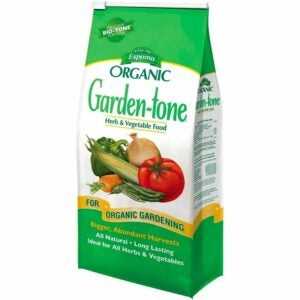
Using mulch around the base of your cucumber and tomato plants can help retain moisture in the soil, prevent weed growth, and regulate soil temperature. Organic mulch, such as straw or wood chips, can also break down over time and provide additional nutrients to the plants.
Conclusion
Fertilising cucumbers and tomatoes is an important part of growing healthy, productive plants. By timing your fertilisation properly, using organic options, applying the fertiliser correctly, and providing adequate watering and mulching, you can give your plants the best chance of success.
Importance of Soil Fertility
Soil fertility is an essential factor to consider when it comes to growing healthy and abundant cucumber and tomato plants. Fertile soil provides the necessary nutrients and minerals that plants need to thrive, ensuring optimal growth and yields. Without adequate soil fertility, plants may struggle to develop properly and produce high-quality fruits.
Nutrient Availability
One of the key reasons why soil fertility is important is because it determines the availability of essential nutrients for plant uptake. Plants require a range of nutrients, such as nitrogen, phosphorus, and potassium, to support their growth and development. These nutrients are present in the soil in various forms, and their availability to plants depends on the soil’s fertility.
A well-fertilised soil ensures that an adequate supply of nutrients is available for plants throughout their growth stages. This allows plants to efficiently take up the nutrients they need, promoting healthy plant development and fruit production.
Improved Plant Growth
When soil fertility is optimal, plants experience improved growth and development. Nutrient-rich soil provides plants with the necessary resources to produce strong and healthy roots, foliage, and fruits. This results in larger plants that are better able to resist diseases, pests, and environmental stresses.
In addition to essential nutrients, fertile soil also contains beneficial microorganisms that help improve plant health. These microorganisms aid in nutrient cycling, breaking down organic matter, and fixing atmospheric nitrogen, all of which contribute to healthy plant growth.
Increased Yield and Quality
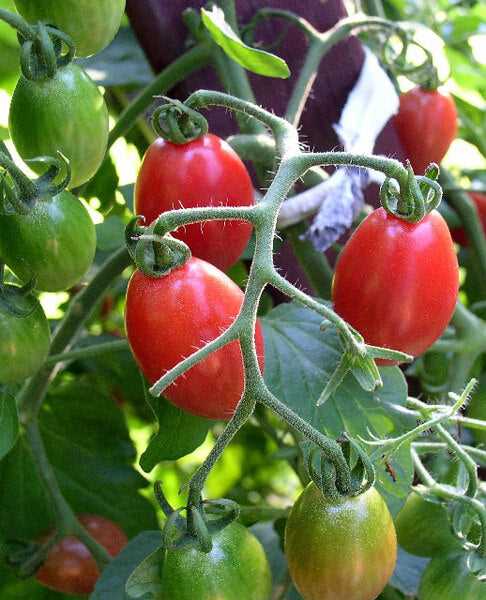
Fertile soil directly impacts crop yields and fruit quality. Plants grown in nutrient-rich soil have access to the necessary resources to produce abundant fruits and flowers. Adequate soil fertility ensures that plants can reach their full potential and produce high-quality, flavorful fruits.
Furthermore, nutrient-rich soil can also enhance the nutritional content of the fruits themselves. By providing plants with the nutrients they need, fertile soil promotes the synthesis of vitamins, minerals, and other beneficial compounds in the fruits.
Sustainability
Investing in soil fertility is not only beneficial for the current growing season but also for long-term sustainability. By maintaining and improving soil fertility, growers reduce the need for synthetic fertilisers and other chemical inputs. This helps preserve and protect the environment, promoting more sustainable agricultural practices.
Furthermore, fertile soil is more resilient to environmental stresses, such as drought or heavy rainfall, which can negatively impact plant growth. By ensuring soil fertility, growers can mitigate the effects of these stresses and maintain consistent crop yields.
| Benefits | Description |
|---|---|
| Improved nutrient availability | Fertile soil ensures that essential nutrients are readily available for plant uptake. |
| Enhanced plant growth | Plants grown in nutrient-rich soil experience improved growth and development. |
| Increased yield and quality | Fertile soil directly impacts crop yields and the quality of fruits produced. |
| Sustainability | Investing in soil fertility promotes long-term sustainability and reduces reliance on synthetic inputs. |
Healthy Plants and High Yields
Healthy plants are essential for achieving high yields in cucumber and tomato cultivation. Proper fertilisation plays a crucial role in providing the necessary nutrients for the plants to grow strong and produce abundant fruits. Here are some guidelines to ensure healthy plants and maximize your crop yield.
1. Soil Preparation
Before planting cucumbers and tomatoes, it is important to prepare the soil properly. Start by clearing the area of any weeds or debris. Loosen the soil and remove any large stones or roots. Incorporate well-rotted compost or organic matter to improve soil fertility and drainage.
2. Balanced Fertilisation
A balanced fertilisation approach is recommended to provide the necessary nutrients for optimal plant growth. Before planting, apply a slow-release organic fertilizer to provide a steady supply of nutrients over time. This will ensure that the plants receive a consistent and balanced diet, avoiding nutrient deficiencies or excesses.
3. Nitrogen, Phosphorus, and Potassium
Nitrogen, phosphorus, and potassium (NPK) are the primary macronutrients needed by cucumber and tomato plants. Nitrogen promotes leafy growth, phosphorus enhances root development and fruiting, while potassium improves overall plant health and disease resistance. Choose a fertilizer with an NPK ratio appropriate for cucumbers and tomatoes, such as 10-10-10 or 14-14-14.
4. Micronutrients
In addition to NPK, cucumbers and tomatoes require various micronutrients for optimal growth and productivity. These include iron, calcium, magnesium, zinc, and others. Consider using a micronutrient-rich fertilizer or supplement to ensure that all essential elements are provided to the plants.
5. Timing of Fertilisation
Proper timing of fertilisation is crucial to avoid overfeeding or starving the plants. Apply a balanced fertilizer shortly before planting to provide a good foundation of nutrients. As the plants grow, regularly apply a side-dressing of fertilizer around the base of the plants or use a liquid fertilizer to provide a continuous supply of nutrients throughout the growing season.
6. Watering and Drainage
Adequate watering is important for nutrient uptake and plant health. Ensure that the soil is consistently moist but not waterlogged. Good drainage is also crucial to prevent waterlogging and nutrient leaching. Consider using raised beds or containers with proper drainage holes to ensure optimal growing conditions.
7. Monitoring and Adjusting
Regularly monitor the plants for any signs of nutrient deficiencies or excesses. This includes yellowing leaves, stunted growth, poor fruit development, or leaf burn. Adjust the fertilisation regimen accordingly, either by applying more or less fertilizer or adjusting the nutrient ratios.
By following these guidelines, you can promote healthy plant growth and maximize your cucumber and tomato yields. Remember to always read and follow the instructions on the fertilizer packaging for the best results.
Fertilising Cucumbers
Cucumbers are heavy feeders and require regular fertilisation to ensure healthy growth and a plentiful harvest. Here are some tips for fertilising cucumbers:
1. Organic Matter
Before planting cucumbers, enrich the soil with organic matter. Organic matter helps improve soil fertility and structure, providing essential nutrients for plant growth. You can incorporate well-rotted compost or aged manure into the soil to increase its nutrient content.
2. Nitrogen-Rich Fertilisers
Cucumbers require a high amount of nitrogen for vigorous foliage growth. Use nitrogen-rich fertilisers, such as well-balanced organic fertilisers or products specifically formulated for cucumbers. Apply the fertiliser according to the packaging instructions, typically during planting or as a side dressing around the base of the plants.
3. Balanced NPK Ratio
A balanced NPK (nitrogen, phosphorus, and potassium) ratio is essential for overall plant health and fruit production. Look for fertilisers with a balanced NPK ratio, such as a 10-10-10 or 14-14-14 formula. These ratios ensure that cucumbers receive adequate nutrients for all growth stages.
4. Regular Feeding
Feed cucumbers regularly throughout the growing season to maintain consistent nutrient levels. Apply fertiliser every 3-4 weeks or as directed on the packaging. Be cautious not to overfeed, as excessive fertilisation can lead to nitrogen burn or imbalanced nutrient uptake.
5. Liquid Fertilisers
Consider using liquid fertilisers for cucumbers, as they are quickly absorbed by the plants’ roots and provide rapid nutrient uptake. Dilute the liquid fertiliser according to the instructions and apply around the base of the plants. This method is especially beneficial for potted cucumbers or plants grown in containers.
6. Mulching
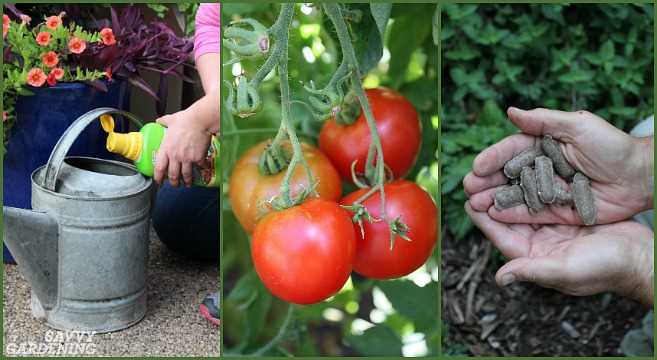
Apply a layer of organic mulch around the base of the cucumber plants. Mulch helps retain moisture, suppress weeds, and improve soil structure. Additionally, as the mulch breaks down, it releases nutrients into the soil, providing a slow-release fertiliser for the cucumbers.
7. Top Dressing
As cucumbers grow, lightly top-dress the soil around the plants with compost or worm castings. This additional boost of nutrients helps sustain healthy growth and enhances fruit production.
8. Monitoring and Adjusting
Regularly monitor the cucumber plants for signs of nutrient deficiencies or excesses. Adjust the fertiliser application as needed, based on plant performance and soil test results. Pay attention to nitrogen levels, as an excess can result in excessive foliage growth and reduced fruit production.
By following these fertilising tips, you can ensure that your cucumber plants receive the nutrients they need to thrive, resulting in a bountiful cucumber harvest.
Timing and Methods
Fertilising cucumbers and tomatoes at the right time and using the correct methods is crucial to ensure a healthy and productive harvest.
Timing
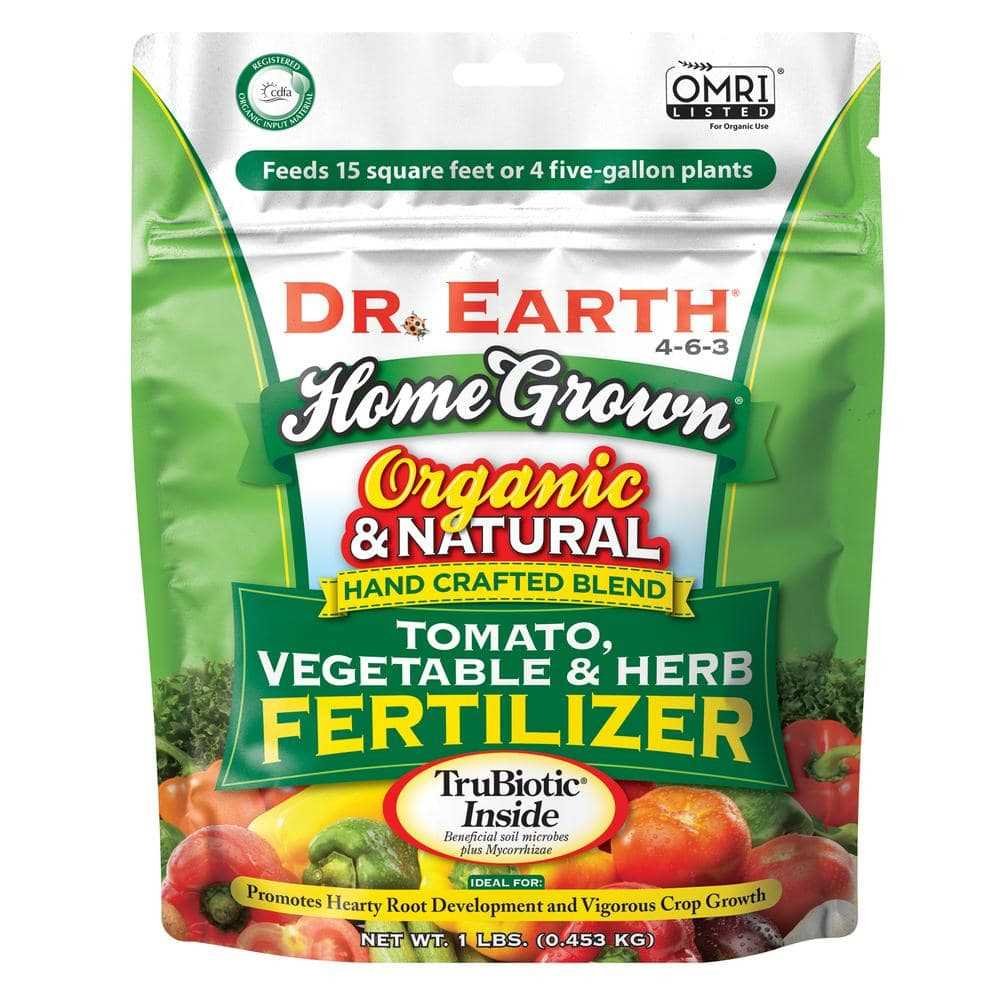
When it comes to fertilising cucumbers and tomatoes, timing is everything. These plants have different nutrient needs at different stages of growth.
- Pre-planting: Before planting your cucumber and tomato seedlings, it is recommended to prepare the soil with compost or well-rotted manure to provide a good foundation of nutrients.
- Early growth: After the seedlings have been transplanted or the seeds have germinated, it is best to wait until they have developed a few true leaves before applying any fertilisers. This usually takes around 3-4 weeks. At this stage, a balanced fertiliser with equal amounts of nitrogen, phosphorus, and potassium can be applied to promote healthy growth.
- Flowering and fruiting: Once the plants start setting flowers and fruit, they require additional nutrients to support their development. It is recommended to use a fertiliser with a higher phosphorus content during this stage to encourage flower and fruit production.
- Mid-season: As the plants continue to grow and produce fruit, it may be necessary to provide them with additional nutrients. This can be done by side-dressing them with a slow-release fertiliser or by using a liquid fertiliser that can be applied directly to the soil.
- Late season: Towards the end of the growing season, it is important to reduce or stop fertilising to allow the plants to naturally prepare for dormancy.
Methods
There are several methods that can be used to fertilise cucumbers and tomatoes, depending on your preferences and the needs of your plants.
- Granular fertilisers: Granular fertilisers can be spread evenly over the soil around the base of the plants and then gently worked into the soil. This method provides a slow release of nutrients over time.
- Liquid fertilisers: Liquid fertilisers can be diluted with water and then applied directly to the soil around the plants. This method allows for a rapid uptake of nutrients.
- Side-dressing: Side-dressing involves adding a small amount of fertiliser to the soil in a shallow trench or hole alongside the plants. This method provides targeted nutrition to the plants’ root zone.
- Foliar feeding: Foliar feeding involves spraying a liquid fertiliser directly onto the leaves of the plants. This method allows for quick nutrient absorption through the foliage.
Regardless of the method you choose, it is important to follow the instructions provided by the manufacturer and to not over-fertilise, as this can lead to nutrient imbalances and plant damage.
Fertilising Tomatoes
When to fertilise tomatoes
Tomatoes should be fertilised at different stages of their growth to ensure optimal development and production. Here are the recommended times to fertilise tomatoes:
- Pre-planting: Before planting tomato seedlings, mix organic matter, such as compost or well-rotted manure, into the soil.
- At planting: Apply a slow-release fertiliser, such as a balanced 10-10-10 formulation, to provide essential nutrients to the young tomato plants.
- During active growth: Fertilise tomatoes every 2-3 weeks with a nitrogen-rich fertiliser, like a 5-10-5 formulation, to promote healthy foliage and fruit development.
- During fruiting: Switch to a low-nitrogen fertiliser, such as a 0-10-10 formulation, to encourage more flowers and fruit set.
How to fertilise tomatoes
When fertilising tomatoes, it’s important to apply the fertiliser evenly and avoid over-fertilisation, as this can lead to excessive vegetative growth and reduced fruit production. Here’s how to fertilise tomatoes:
- Measure the correct amount: Read the instructions on the fertiliser package to determine the appropriate amount to use for your tomato plants.
- Apply the fertiliser: Spread the fertiliser evenly around the base of the tomato plants, keeping it at least a few inches away from the stems to prevent burn.
- Water after fertilising: After applying the fertiliser, water the plants thoroughly to help the nutrients penetrate the soil and reach the roots.
- Monitor plant response: Keep an eye on the tomato plants to ensure they are responding well to the fertiliser. If you notice any signs of nutrient deficiency or excess, adjust the fertiliser application accordingly.
Fertiliser recommendations for tomatoes
There are various types of fertilisers available for tomatoes, including organic and synthetic options. Here are some commonly used fertilisers for tomatoes:
| Fertiliser Type | Nutrient Content | Usage |
|---|---|---|
| Compost | Organic matter | Mix into soil before planting, apply as a top dressing during the growing season |
| Well-rotted manure | Organic matter, nitrogen, phosphorus, potassium | Mix into soil before planting |
| Slow-release fertiliser | Various nutrients | Apply at planting, provides consistent nutrients over time |
| Balanced fertiliser (10-10-10) | Nitrogen, phosphorus, potassium | Apply at planting, provides equal amounts of nutrients |
| Nitrogen-rich fertiliser (5-10-5) | Nitrogen, phosphorus, potassium | Apply during active growth, promotes foliage and fruit development |
| Low-nitrogen fertiliser (0-10-10) | Phosphorus, potassium | Apply during fruiting, encourages flower and fruit set |
When and How to Apply Fertiliser
Applying fertiliser at the right time and in the right way is crucial for the healthy growth and development of cucumbers and tomatoes. Here are some guidelines to follow:
1. Timing
It is important to apply fertiliser at the correct stage of plant growth. For cucumbers and tomatoes, it is best to apply fertiliser when the plants are just starting to produce flowers. This is usually around 4-6 weeks after transplanting or when the plants are about 12-18 inches tall.
2. Fertiliser Type
For cucumbers and tomatoes, it is recommended to use a balanced fertiliser that contains equal amounts of nitrogen (N), phosphorus (P), and potassium (K). Look for a fertiliser with an NPK ratio of 10-10-10 or 14-14-14. This will provide the plants with essential nutrients for healthy growth.
3. Application Method
There are two main methods of applying fertiliser to cucumbers and tomatoes: broadcasting and side-dressing.
Broadcasting: This method involves spreading the fertiliser evenly over the soil surface around the plants. Use a garden fork or a rake to lightly work the fertiliser into the top layer of soil. Be careful not to damage the plant’s roots.
Side-dressing: This method involves applying the fertiliser in a narrow trench or furrow alongside the plants. Dig a shallow trench about 4-6 inches away from the plant’s stem and sprinkle the fertiliser into it. Then, cover the trench with soil and water thoroughly.
4. Fertiliser Amount
The amount of fertiliser to apply will depend on the specific product you are using as well as the size and age of your plants. Follow the instructions on the fertiliser packaging for the recommended application rates. It is important not to over-fertilise, as this can burn the plants’ roots and cause damage.
5. Watering After Application
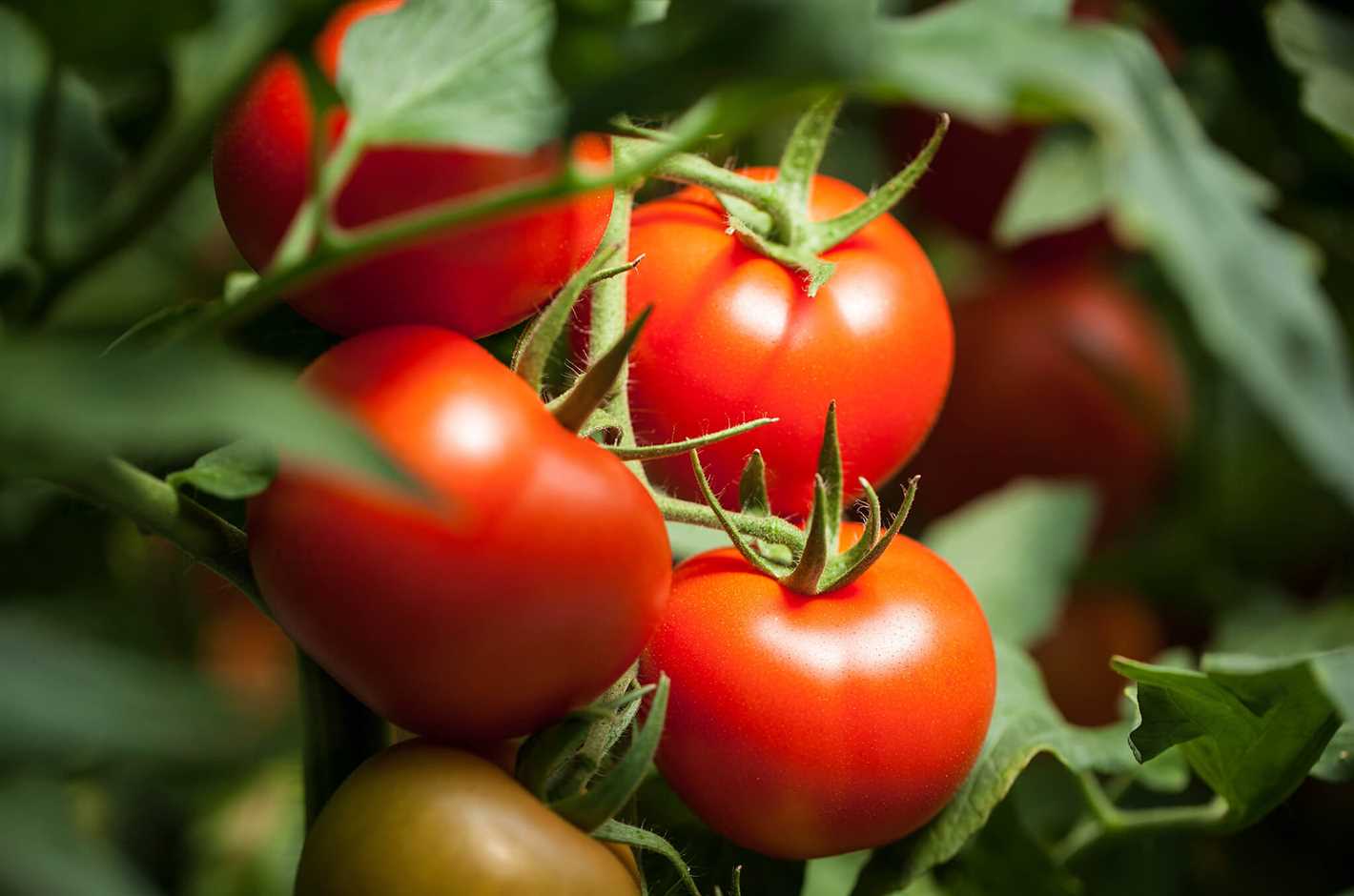
After applying fertiliser, it is important to water the plants thoroughly. This will help to dissolve the fertiliser and carry it down into the root zone where the plants can absorb it. Water the plants deeply, making sure the soil is evenly moist.
By following these guidelines, you can ensure that your cucumbers and tomatoes receive the right amount of nutrients at the right time, leading to healthy and productive plants.
Recommended Fertilisers
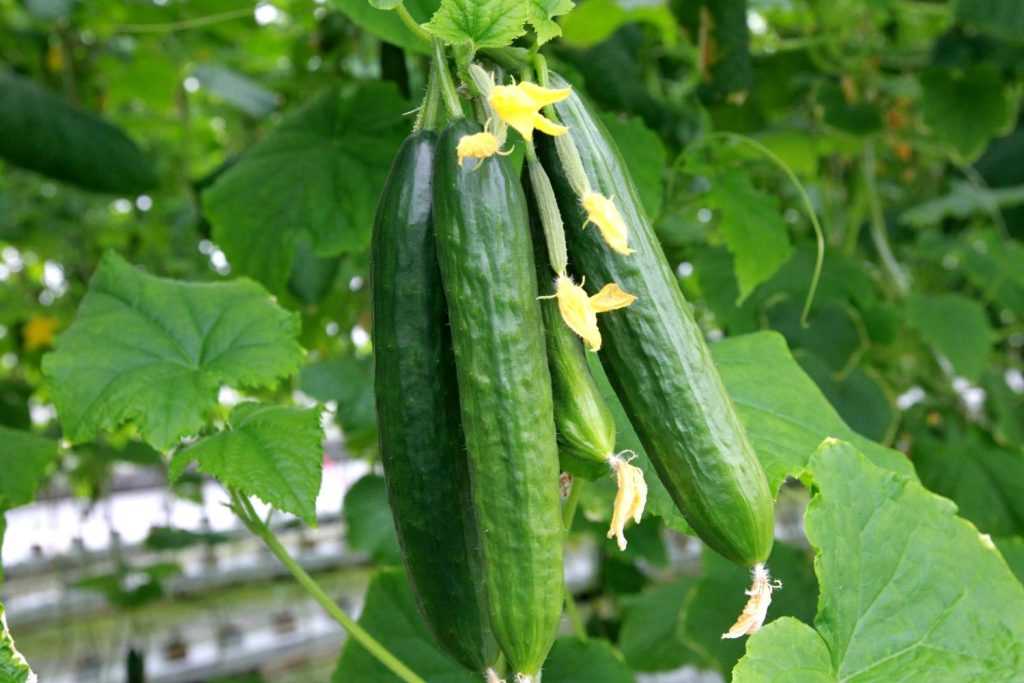
When it comes to fertilising cucumbers and tomatoes, it’s important to use the right type and amount of fertiliser to ensure healthy plant growth and abundant harvest. Here are some recommended fertilisers that you can use:
1. Organic Fertilisers
Organic fertilisers are derived from natural sources and provide essential nutrients to the plants. They improve soil fertility, promote beneficial microbial activity, and enhance nutrient absorption. Some popular organic fertilisers for cucumbers and tomatoes include:
- Compost: Rich in organic matter, compost improves soil structure and fertility. It also helps retain moisture and suppresses weed growth. Apply a layer of compost around the base of the plants or mix it into the soil before planting.
- Manure: Well-rotted animal manure, such as cow or chicken manure, is an excellent source of nutrients for plants. Apply it to the soil a few weeks before planting or use it as a top dressing around the plants.
- Bone Meal: High in phosphorus, bone meal promotes root development, flowering, and fruit formation. Mix it into the soil before planting or apply it as a side dressing during the growing season.
- Fish Emulsion: Fish emulsion is a liquid fertiliser made from fish waste. It is rich in nitrogen and other essential nutrients. Dilute it with water according to the package instructions and use it to water the plants every two weeks.
2. Synthetic Fertilisers
Synthetic fertilisers are manufactured chemically and provide fast-acting nutrients to the plants. They can be helpful when there is a specific nutrient deficiency or to promote rapid plant growth. Some commonly used synthetic fertilisers for cucumbers and tomatoes are:
- NPK Fertilisers: NPK fertilisers contain a balanced ratio of nitrogen (N), phosphorus (P), and potassium (K). They are available in different formulations such as 10-10-10 or 14-14-14. Apply them according to the directions on the package.
- Soluble Fertilisers: Soluble fertilisers are mixed with water and applied to the plants through irrigation. They provide a quick nutrient boost and are easily absorbed by the plants. Follow the recommended dosage on the package.
- Foliar Sprays: Foliar sprays are applied directly to the leaves and provide nutrients through absorption. These sprays can quickly correct nutrient deficiencies and enhance plant growth. Use them as directed on the label.
Always follow the instructions on the packaging when applying fertilisers to cucumbers and tomatoes. Over-fertilisation can cause nutrient imbalances, leaf burn, or plant damage. It’s also important to monitor the plants’ response to the fertiliser and adjust the application accordingly.
Types and Nutrient Ratios
When it comes to fertilising cucumbers and tomatoes, it’s important to understand the types of nutrients they need and the ratios in which they should be applied. The main nutrients that cucumbers and tomatoes require are nitrogen (N), phosphorus (P), and potassium (K), also known as NPK.
Nitrogen (N): Nitrogen is essential for the overall growth and development of both cucumbers and tomatoes. It helps in producing green, leafy vegetation and promotes photosynthesis. Cucumbers and tomatoes need a higher nitrogen ratio during the initial stages of growth.
Phosphorus (P): Phosphorus is important for promoting root development, flowering, and fruit setting. It also aids in the transfer of energy within the plant. Cucumbers and tomatoes require a higher phosphorus ratio during the flowering and fruiting stages.
Potassium (K): Potassium plays a crucial role in overall plant health, disease resistance, and fruit quality. It helps in water regulation, nutrient uptake, and carbohydrate metabolism. Cucumbers and tomatoes need a higher potassium ratio throughout their growth cycle.
It’s important to note that the nutrient ratios may vary depending on the specific variety of cucumbers and tomatoes being grown. It is recommended to consult with a local horticulturist or reference a reliable gardening resource for specific nutrient requirements.
Here is a general guideline for the nutrient ratios to be used for cucumbers and tomatoes:
| Nutrient | Cucumbers | Tomatoes |
|---|---|---|
| Nitrogen (N) | High during vegetative growth stage | High during vegetative growth stage |
| Phosphorus (P) | Medium during flowering and fruiting stage | Medium during flowering and fruiting stage |
| Potassium (K) | High throughout the growth cycle | High throughout the growth cycle |
It’s important to monitor the nutrient levels in the soil and adjust the fertiliser application accordingly. Regular soil testing can help determine the specific nutrient requirements of your cucumbers and tomatoes.
Remember, proper fertilisation is just one component of successful cucumber and tomato cultivation. Providing adequate water, sunlight, and pest control measures are equally important for healthy plant growth and high-quality fruit production.
“Question-Answer”
When is the best time to fertilise cucumbers and tomatoes?
The best time to fertilise cucumbers and tomatoes is before planting. You can mix organic matter into the soil a few weeks before planting to help provide nutrients for the plants. Additionally, you can also apply a slow-release balanced fertilizer during planting.
How often should I fertilise my cucumber and tomato plants?
You should fertilise your cucumber and tomato plants every 2-4 weeks throughout the growing season. This will help provide a continuous supply of nutrients for healthy plant growth and yield. However, be cautious not to over-fertilise as it can lead to excessive foliage growth and reduced fruit production.
What type of fertiliser should I use for cucumbers and tomatoes?
For cucumbers and tomatoes, it is recommended to use a balanced and water-soluble fertilizer with equal levels of nitrogen, phosphorus, and potassium. This will help promote overall plant growth and development. Alternatively, you can also use organic fertilisers such as compost or well-rotted manure.
Can I use homemade compost as a fertiliser for cucumbers and tomatoes?
Yes, homemade compost can be an excellent source of nutrients for cucumbers and tomatoes. It is rich in organic matter and provides a slow-release of nutrients over time. Before using homemade compost, make sure it is well-rotted and free from any weed seeds or pathogens that could harm your plants.
What are the signs that my cucumber and tomato plants need fertilisation?
If your cucumber and tomato plants show signs of slow or stunted growth, yellowing leaves, or poor fruit development, it may be a sign that they need fertilisation. Additionally, if you notice that your plants are not producing as many fruits as expected or the fruits are small and misshapen, it could be due to nutrient deficiency. A soil test can help determine the exact nutrient needs of your plants.
Can I use foliar feeding as a method of fertilising cucumbers and tomatoes?
Yes, foliar feeding can be used as a supplementary method of fertilising cucumbers and tomatoes. It involves spraying a liquid fertilizer directly onto the leaves of the plants. This method allows for quick nutrient absorption by the plants and can provide a boost of nutrients during critical growth stages or periods of stress.
Can I use fertilisers with high nitrogen content for cucumbers and tomatoes?
While nitrogen is essential for plant growth, using fertilisers with high nitrogen content can lead to excessive foliage growth at the expense of fruit development. It is best to use balanced fertilisers with equal levels of nitrogen, phosphorus, and potassium for cucumbers and tomatoes. This will ensure overall plant health and balanced growth.







